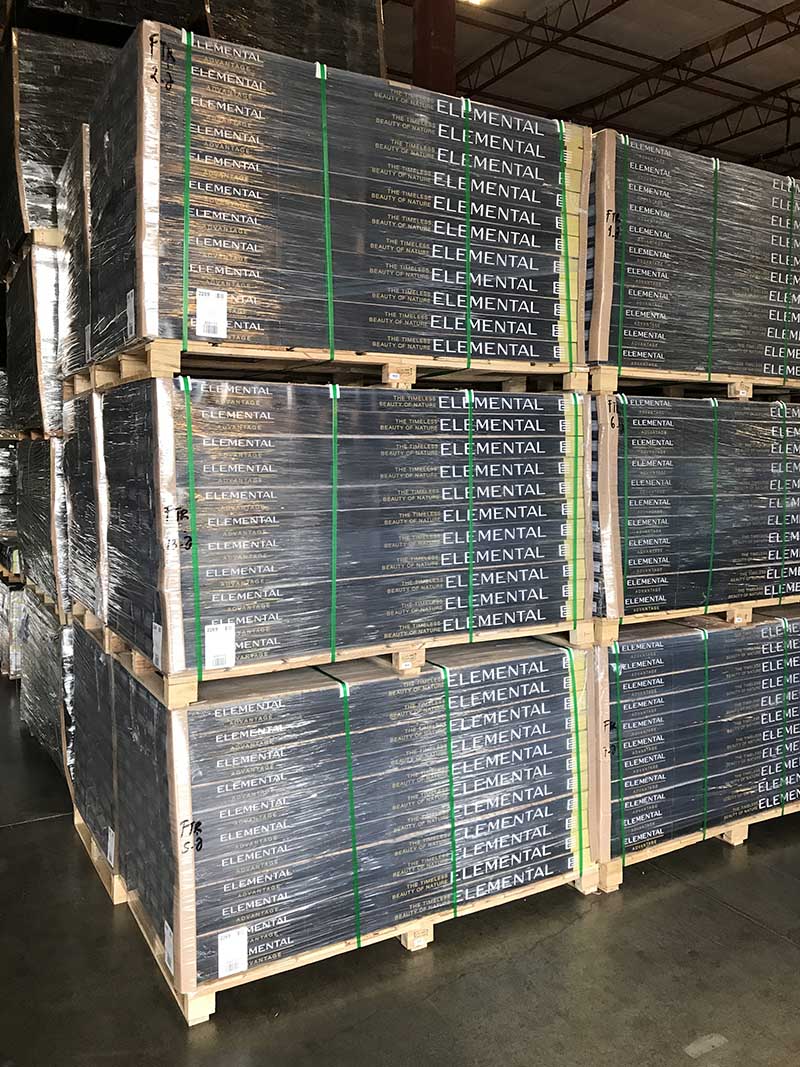Hardwood Flooring - Made in China
Tariff Issues
By
John McGlocklin,
01/07/19
I lived in Brazil for nearly 18 years manufacturing and sourcing hardwood flooring. Brazil is my second home. It's where my wife's family lives, and where she and my son were born. I love Brazil, and the country's Amazonian exotic wood flooring and decking were the starting point for NOVA and its ELEMENTAL brand flooring.
Prior to the 2008 Recession and consequent long economic slowdown, Nova had begun importing some flooring products milled and finished in China. Small-leaf Acacia is plantation grown there, Kempas from Indonesia was being milled there and I added these products to our Exotic and World collections. I also added a solid prefinished (PF) American Hickory product made from 100% American Hickory logs exported to China. With the economic downturn, price became more important than ever and the more expensive exotics fell out of favor, so we brought on more China-made price-point products and the SKU's increased. Solid hand-scraped (HS) birch, HS oak, HS hickory and so on. Ten years ago these mills did a decent job and they never stopped improving, such that today it may be that the highest quality wood flooring manufacture in the world can be found in the best Chinese manufacturers. We live in a fast changing world.

South American Wood Flooring Meltdown
Over this same period, the South American wood flooring industry was in melt down. Many of the mills closed up shop permanently, others stopped producing flooring, including Nova Brazil. It just wasn't profitable or very competitive for a confluence of reasons outside the scope of this discussion, but due to which, and despite my strong link to the Brazilian industry, I began moving my prefinished (PF) South American wood flooring production to our China mill partner. Why this sacrilegious move? Because they were making a better product, at a more competitive price, and with a more reliable delivery time. The result being wholesale customers who are happy with the quality, price, and at having fewer callbacks for complaints and claims.
This change has been smart business for Nova and ELEMENTAL flooring, it has been good for my customers, and their customers. It has generated profits for various companies in the distribution chain and given homeowners beautiful quality floors to live on. US manufacturers were not producing flooring in these species so sourcing from them wasn't an option, and even had it been, their pricing wouldn't have been competitive when selling to the very same wholesale distributor customer base. Nova was a manufacturer/exporter in Brazil and as an importer we effectively play the role of manufacturer/distributor for factories that don't have their own distribution network in the USA and Canada. For the most part, we provide the market with wood flooring options that US manufacturers don't offer. Variety is the spice of life.

One of my best partner customers and sometimes supplier, based in the middle American hardwood heartland is highlighted in the NYTimes Magazine feature article linked below. This report puts a face on the multifaceted character of the tariff issue, and describes how despite good intentions the tariffs can be damaging to the same US industries, communities and economy that it seeks to protect.
New York Times - The American Casualties of Trump's Trade War
Food for thought: Import tariffs 2018 -
What is the problem the tariffs are seeking to resolve?
1. Are they a tool to force better protections for US intellectual property? This is a legitimate problem but the wood flooring industry is not high tech, with logs and lumber to China sold for profit by US companies and wood flooring imported and sold for profit by US companies. US tariffs/taxes on these relatively low tech products will reduce profits and inflate prices for these items for US companies and homeowners. Some products will cease to be offered, limiting market options especially on the lower end of price scale that impacts middle class buyers more heavily. If wood flooring tariffs are just a "tool" for negotiation, then if the tool proves not to be effective for the job required, might not continued use of it might only damage or ruin the tool and perhaps make worse the problem it was designed to fix?
2. Are the tariffs designed to improve the balance of trade between China and the USA? It is true that the US imports much more from China than it exports to China. It is also true that much of what is imported from China is manufactured there with participation of the US companies that design, import and sell for profit as their branded product in the USA market. Also a strong China economy represents an enormous and growing consumer market (and profits) for many US branded products independent of where they might be made. For example, the iPhone is an expensive product that Apple imports from China. Apple employs a lot of people in the USA marketing, selling, delivering these products. Apple also sells a huge number of their phones in China (the largest smartphone market in the world) and those profits, in part, come back to the USA.
Huffington Post - Apple's Stark Warning May be Ominous News for China
Does it make sense to view the import of China-made iPhones as negative simply for lack of a similar high-tech product made in the USA and exported to China to balance this import value out? A simplistic accounting of dollars imported vs dollars exported between the countries doesn't tell the whole story. USA consumers benefit from products made more efficiently and/or inexpensively elsewhere, is this simply at the expense of American industrial worker jobs? Regardless the answer here, which is debatable for sure, a cost-benefit analysis showing the pros and cons on both sides is the only way to address what is clearly not a straight-forward black and white issue…despite how it may be portrayed by different camps in the media.
3. If pressure on China and a reduction of dependence on Chinese production are a key objective of the tariffs, then why not move forward with the Trans Pacific Partnership (TPP), a long negotiated free trade agreement between a set of countries (USA, Canada, Mexico, Chile, Peru, Japan, Malaysia, Vietnam, Brunei, Singapore, New Zealand and Australia) not including China, which was designed to give all of these countries added incentive to increase production for the preferential trade amongst themselves of products that in many cases are now made primarily in China. The TPP was strongly opposed by China, who was undoubtedly very relieved when the new US administration pulled out of the agreement. The larger question this raises is what alternatives to tariffs exist to pressure China, or any country/industry for that matter, to change trade practices we deem unfair, and what are we doing to analyze and develop those options?
Tariffs are a Simple Tax on US Imports Designed to Protect U.S. Industries
In the end, tariffs are a simple tax on US imports designed to protect US industries from what are deemed unfair industrial advantages elsewhere. They have always been around and have typically been applied specifically on a case industry specific basis and justified based on the specific analysis of the competitive advantages deemed unfair or unequal. Trade relations are accustomed to and can weather these negotiations without spilling into a full-blown trade war. The kinds of broad sweeping tariffs we are now seeing applied to China imports mark a different approach that can lead to an all-out trade war between the US and China. Such a scenario brings great disruption and financial damage to many US industries big and small as they scramble to transition their supply chains and sales markets in the wake of an impasse between these two economic superpowers who, like it or not, may have greater common interests than opposing ones.
By
John McGlocklin,
01/07/19
Comments?
Display Name:
Contact Email:
please be respectful of others' opinions and do not use profanity.
comments may be edited for objectionable content.
Email addresses are not publicly posted, and are used to follow up directly with your comment as needed.




















